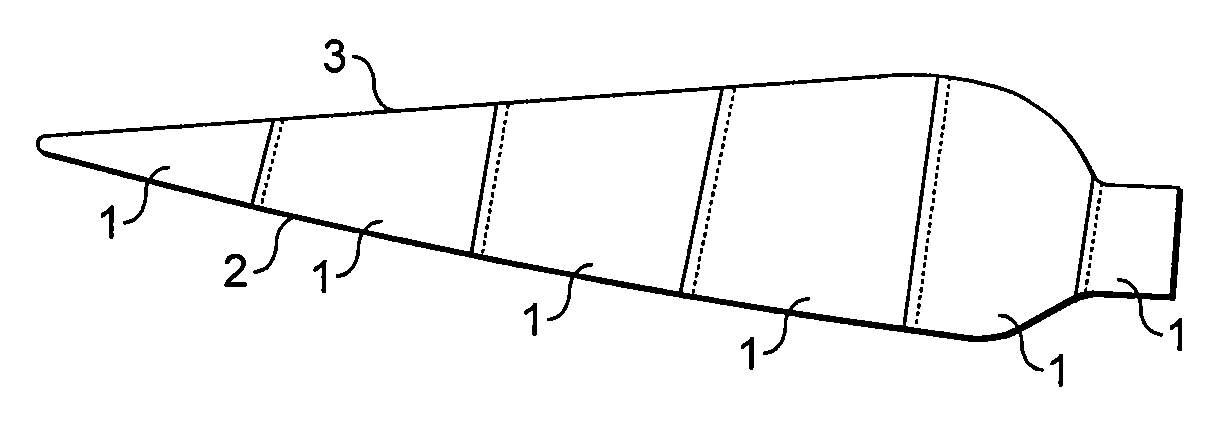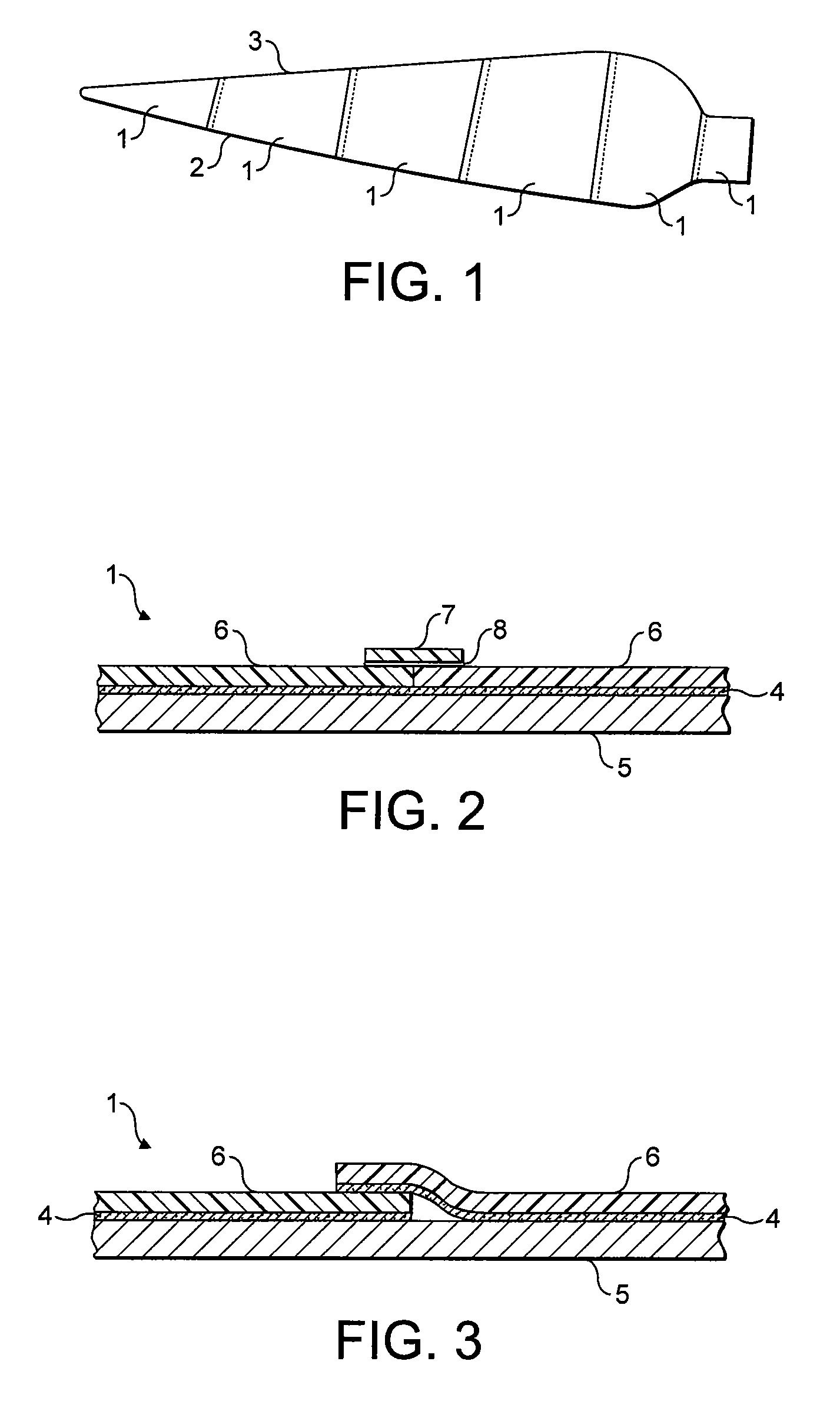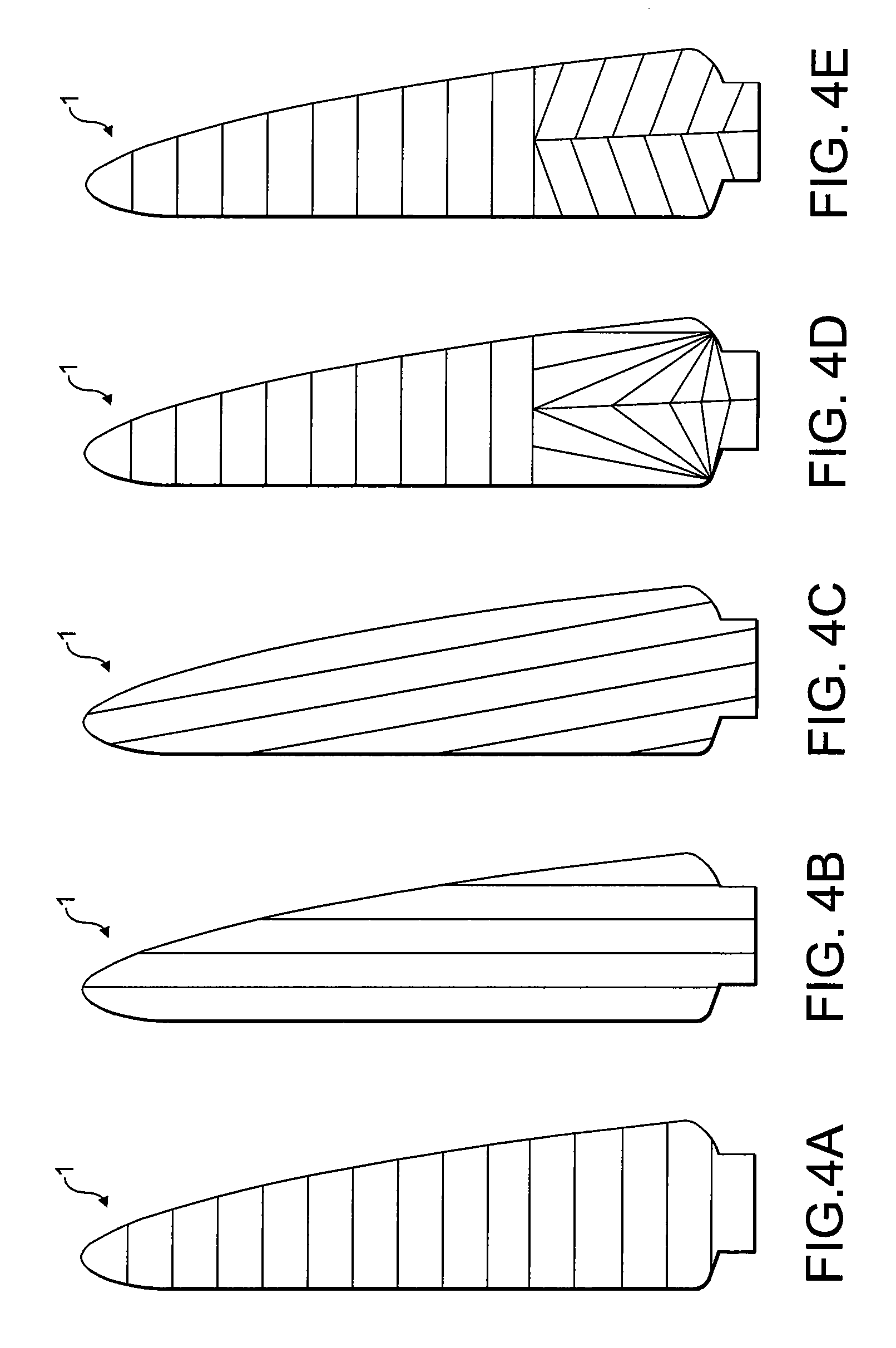Wind turbine blade
a technology of wind turbine blades and blades, which is applied in the direction of wind turbines with parallel air flow, wind turbine components, liquid fuel engine components, etc., can solve the problems of difficult, if not impossible, to achieve a perfect surface straight large number of cosmetic defects out of the mould, and large number of adhesion problems, etc., to achieve easy positioning, and increase the flexibility of the film
- Summary
- Abstract
- Description
- Claims
- Application Information
AI Technical Summary
Benefits of technology
Problems solved by technology
Method used
Image
Examples
Embodiment Construction
[0048]A wind turbine blade is shown in FIG. 1. The basic body of the blade may be formed in accordance with conventional techniques in which full length mouldings of each half are made and the two halves are joined together in a clam shell-like construction. Alternatively, the blades may have a modular construction as described in our earlier GB application number 0717690.2.
[0049]The present invention is concerned only with the surface coating. As can be seen from FIG. 1, the blade is covered with a number of strips 1 of self-adhesive of thermoplastic material 6 and adhesive 4. Each strip extends from the leading edge 2 to the trailing edge 3. The opposite side of the blade corresponds to this. At these leading and trailing edges 2, 3 the strip on one side may overlap slightly with the strip on the opposite side or a further thin strip may be provided along the edge to cover the join between strips in a similar manner to that described in the reference to FIGS. 2 and 3 below.
[0050]A...
PUM
| Property | Measurement | Unit |
|---|---|---|
| Fraction | aaaaa | aaaaa |
| Fraction | aaaaa | aaaaa |
| Fraction | aaaaa | aaaaa |
Abstract
Description
Claims
Application Information
 Login to View More
Login to View More - R&D
- Intellectual Property
- Life Sciences
- Materials
- Tech Scout
- Unparalleled Data Quality
- Higher Quality Content
- 60% Fewer Hallucinations
Browse by: Latest US Patents, China's latest patents, Technical Efficacy Thesaurus, Application Domain, Technology Topic, Popular Technical Reports.
© 2025 PatSnap. All rights reserved.Legal|Privacy policy|Modern Slavery Act Transparency Statement|Sitemap|About US| Contact US: help@patsnap.com



